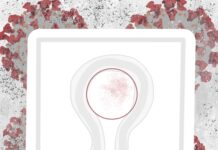If you have been around campus, you probably know of the many tunnels that exist connecting buildings to each other. It makes for an easy way to get around campus without having to take more convoluted routes to get to certain buildings. Not to mention, it helps avoid the weather when it gets harsh. A popular tunnel for student use is the SLC/MC bridge. However, while this bridge is advantageous for students, it has been posing quite a bit of harm for birds.
According to Penny Martyn, who was part of the development team of UBC “Bird Friendly Design Guidelines for Buildings,” birds are unable to see glass as a solid object. In turn, when birds see glass, they end up thinking that they can fly through it. As a result, many birds have been injured or killed which is an all-too-common cause of casualty for birds. The SLC/MC bridge, unfortunately for the birds, is made of glass.
The UW chapter of Society for Ecological Restoration (SER-UW) has been using a monitoring program to track collisions from birds to windows. The form is thorough in its collection of information, as it asks for details about date and time, species or general description of bird, building or structure impacted, location, and the health of the bird. Not to mention, people can also input photos of the bird and location. The reason the SLC/MC bridge is considered dangerous for birds is because they’ve received quite a number of reports about this bridge from the form. Therefore, the bridge is noted as a high-risk area for bird collisions.
These days, if you’ve been on the SLC/MC bridge, you would notice a new addition on the right-hand side of the bridge. To reduce bird collisions, UW installed black dots on the inside glass. These black dots were placed from the top to the bottom of the glass with two inches of space between each dot. With this, birds would be able to see the dots and thus, identify the glass as something they cannot fly through.
These black dots are a pilot project titled Feather Friendly®. To measure the success of the project, monitoring of the bridge will occur during the next few migratory seasons. This pilot has been made possible due to funding from the Sustainable Action Fund. The fund is responsible for many different projects like the Reusable Container Marketing, RAC Hydration Station, and Campus Housing Waste Diversion.
In the UW Climate Emergency Declaration, it states, “[T]he impacts of climate change are already being felt in both Canada and around the world and will continue to intensify, posing acute and lasting risks for […] natural ecosystems.” In a time when rising temperatures are posing significant risk to biodiversity, it is crucial that we do what we can to keep animals alive. The decals on the bridge are part of the effort to keep the biodiversity around Waterloo alive when climate change is already threatening them. It would be a tragedy if the many species around Waterloo were lost. After all, what would UW be if not for its geese?




























